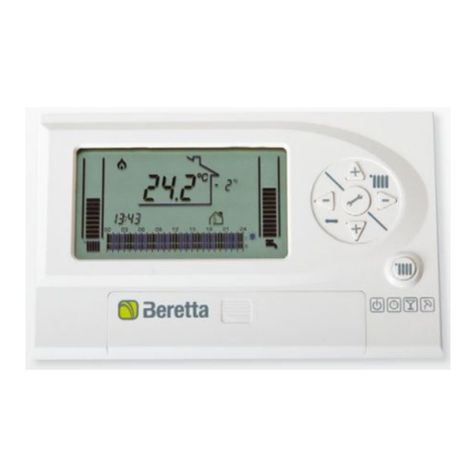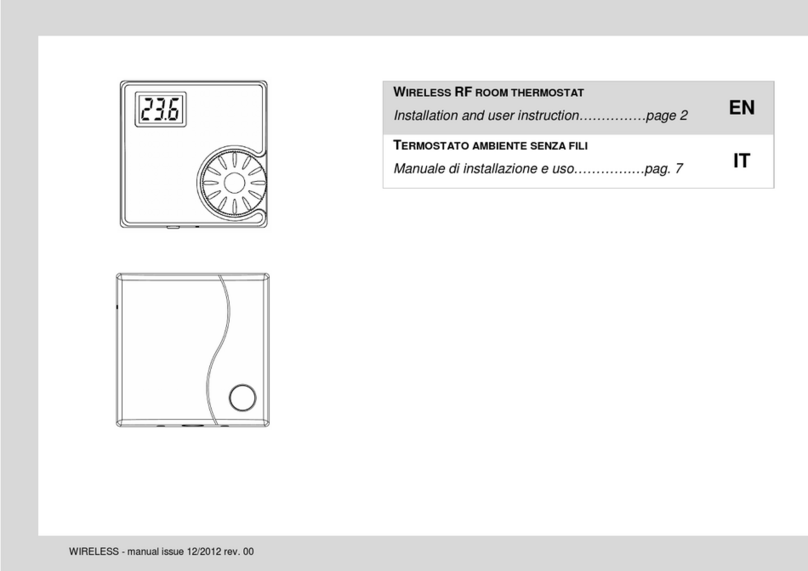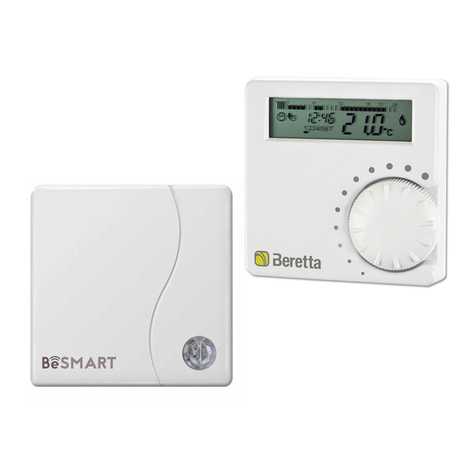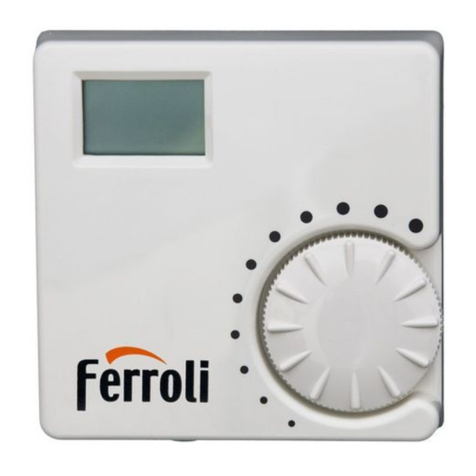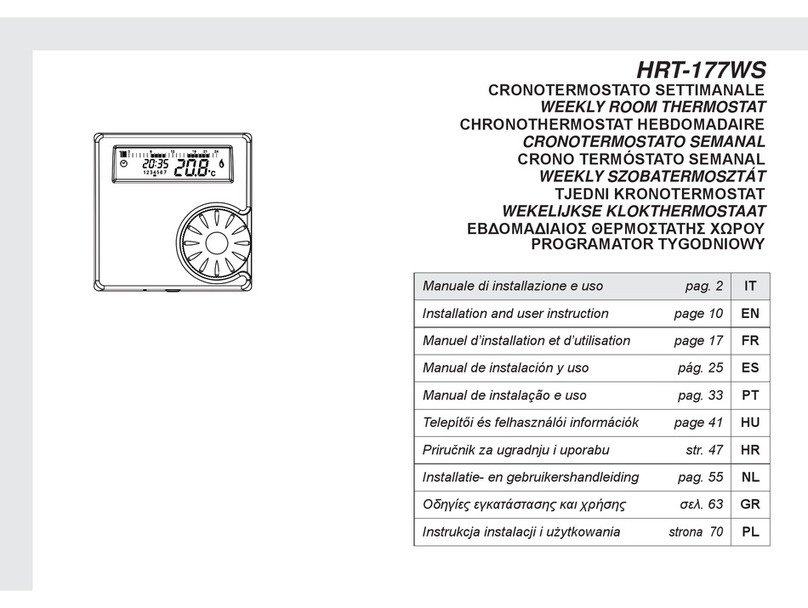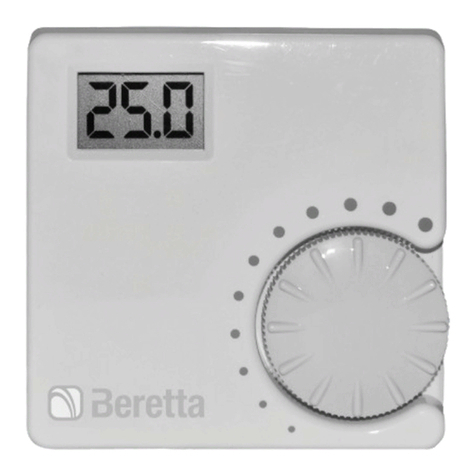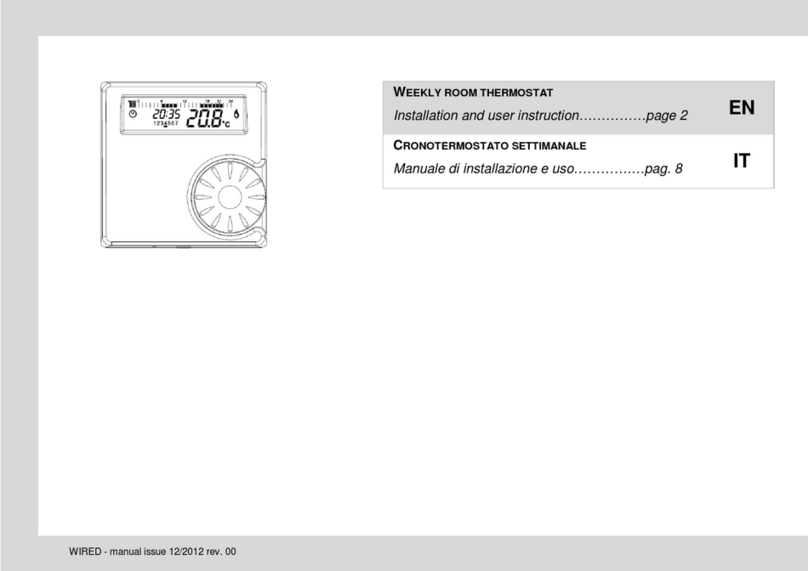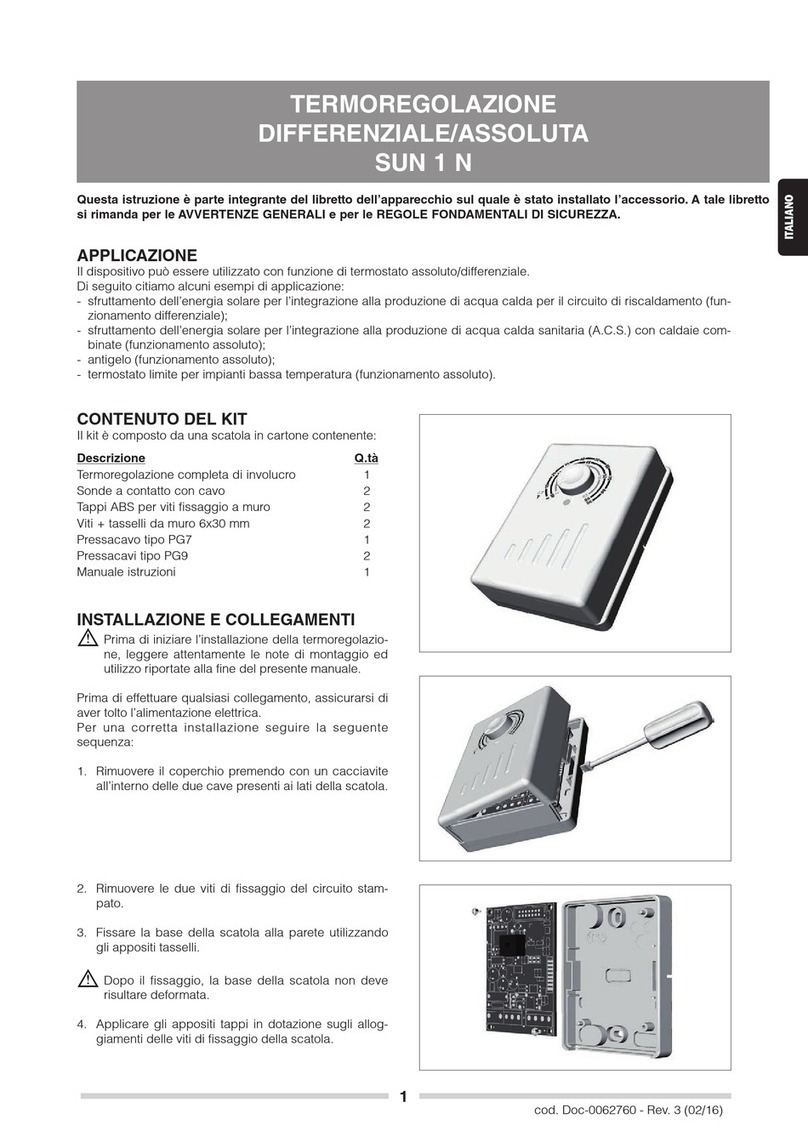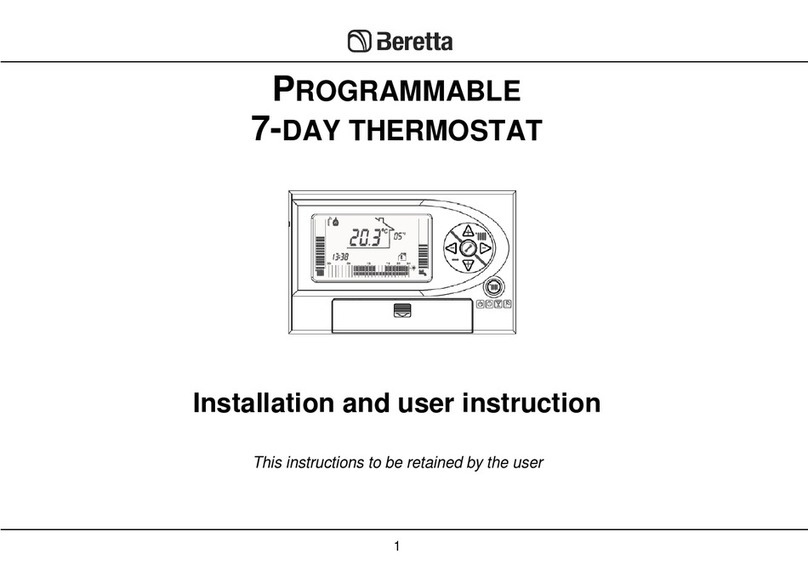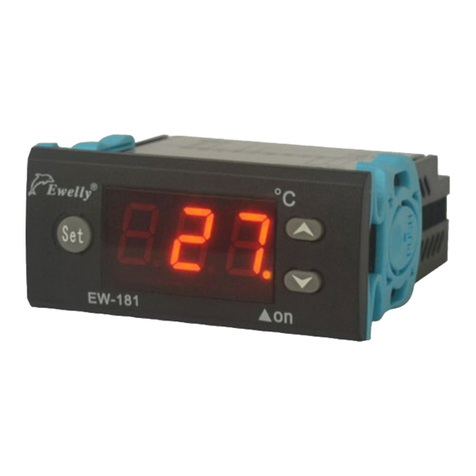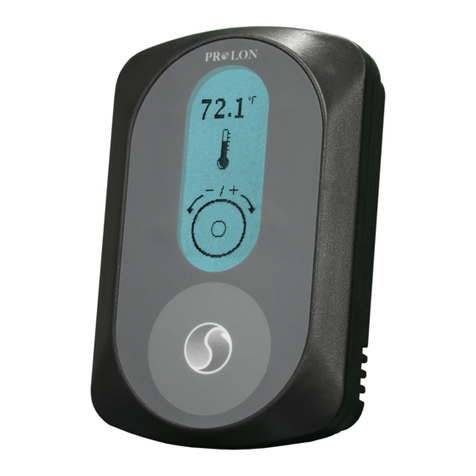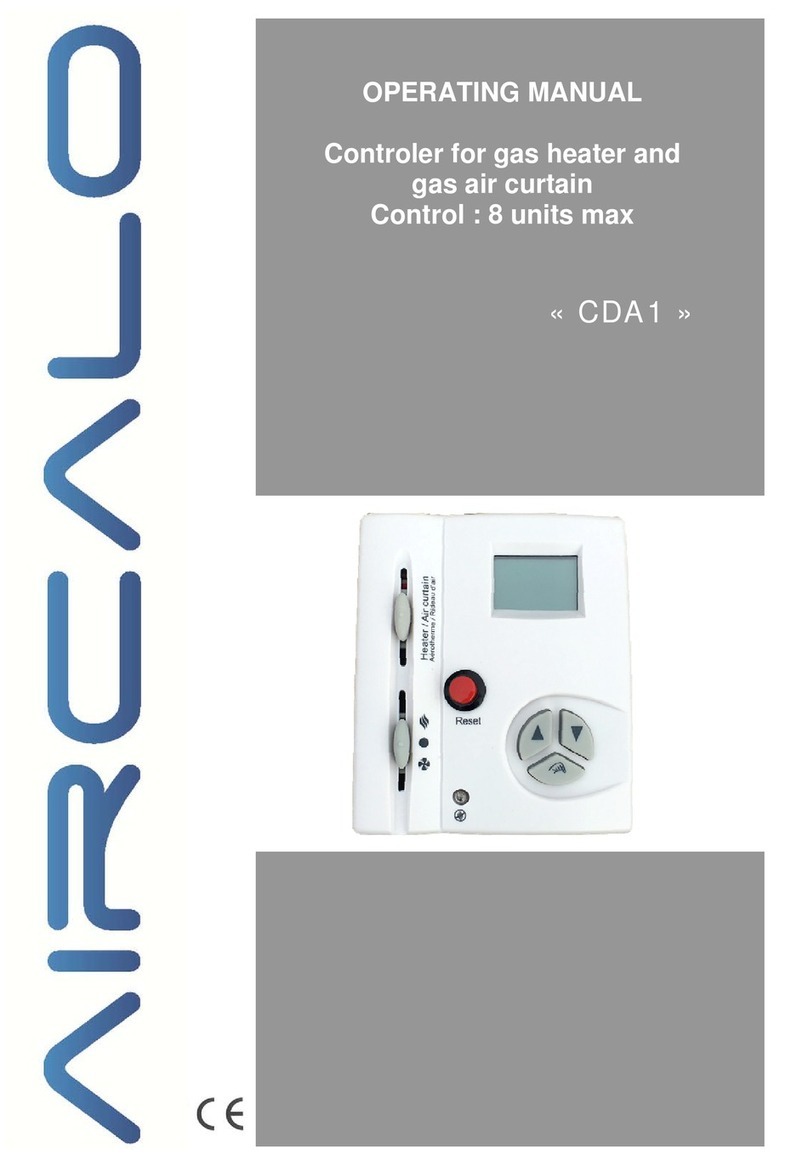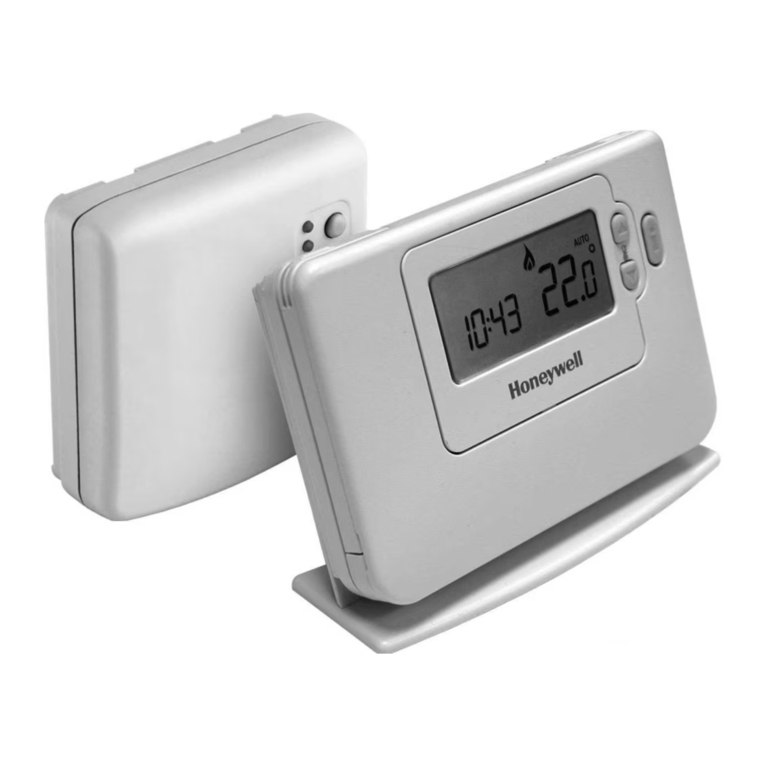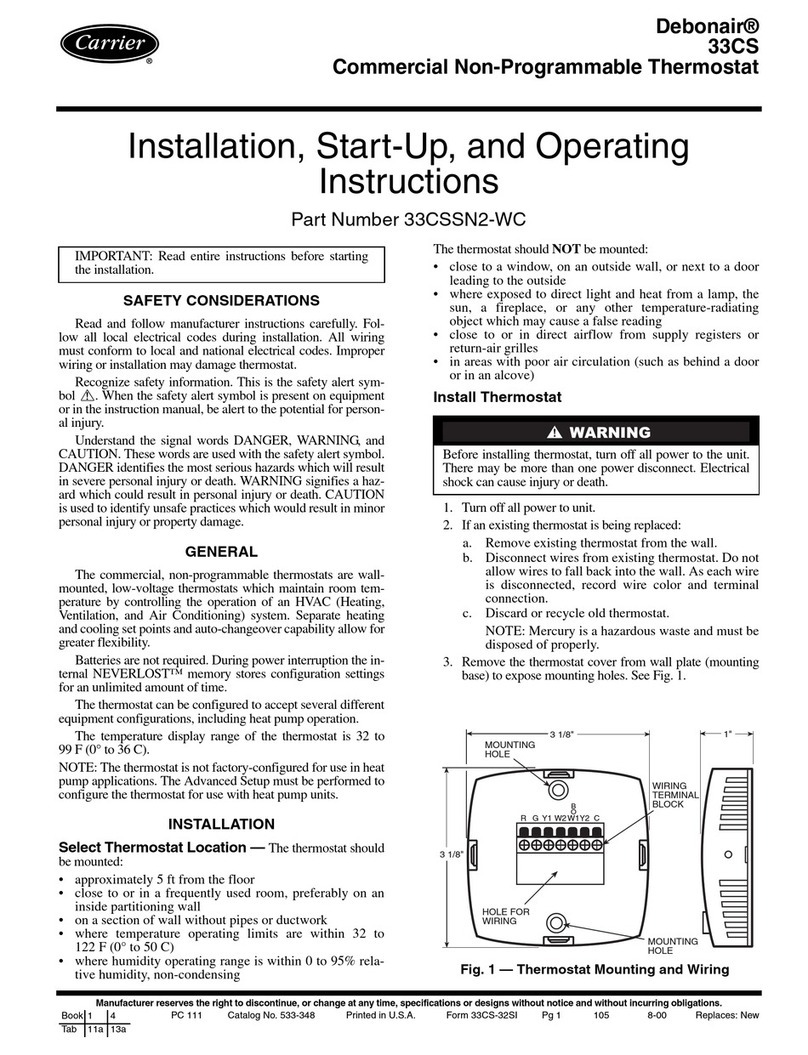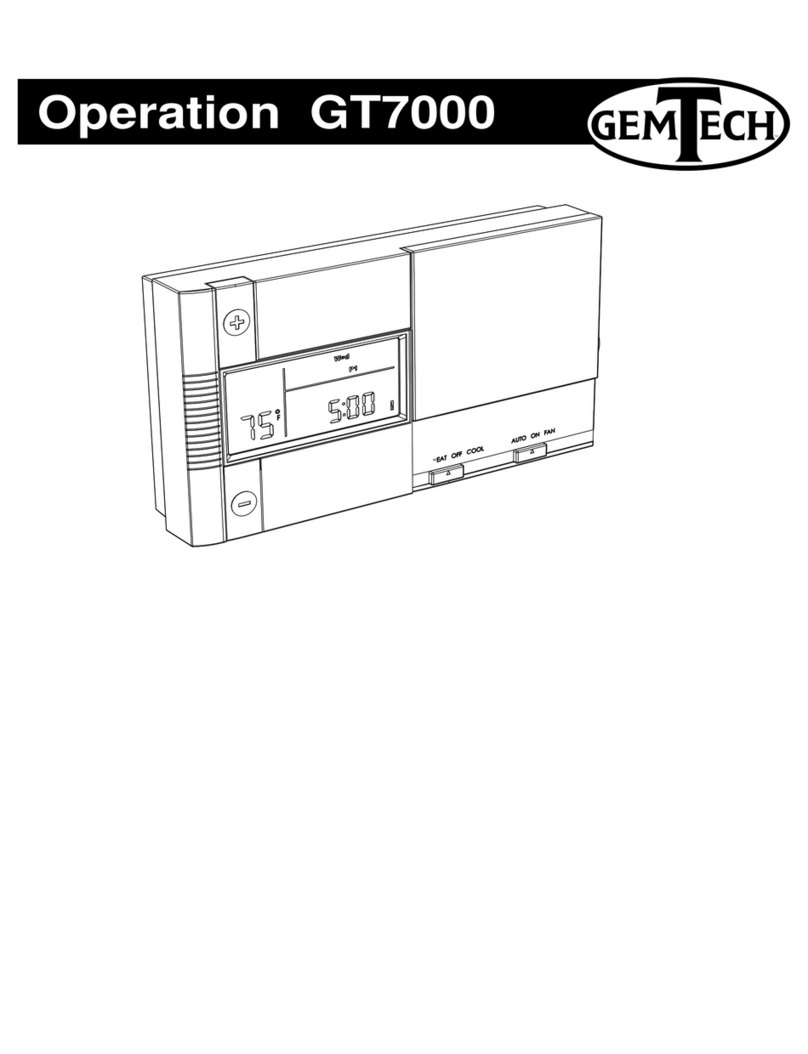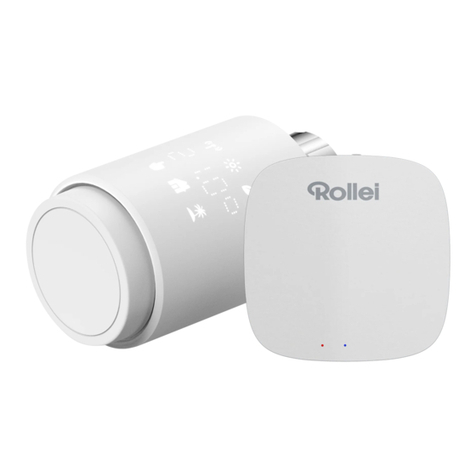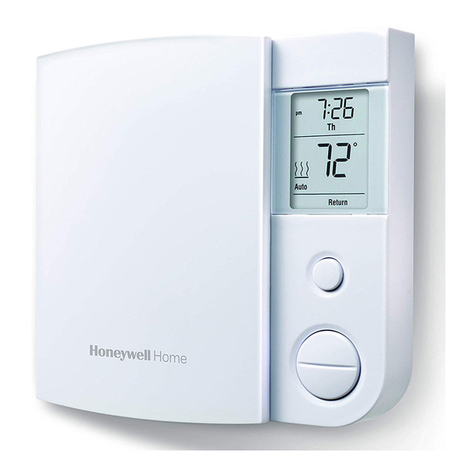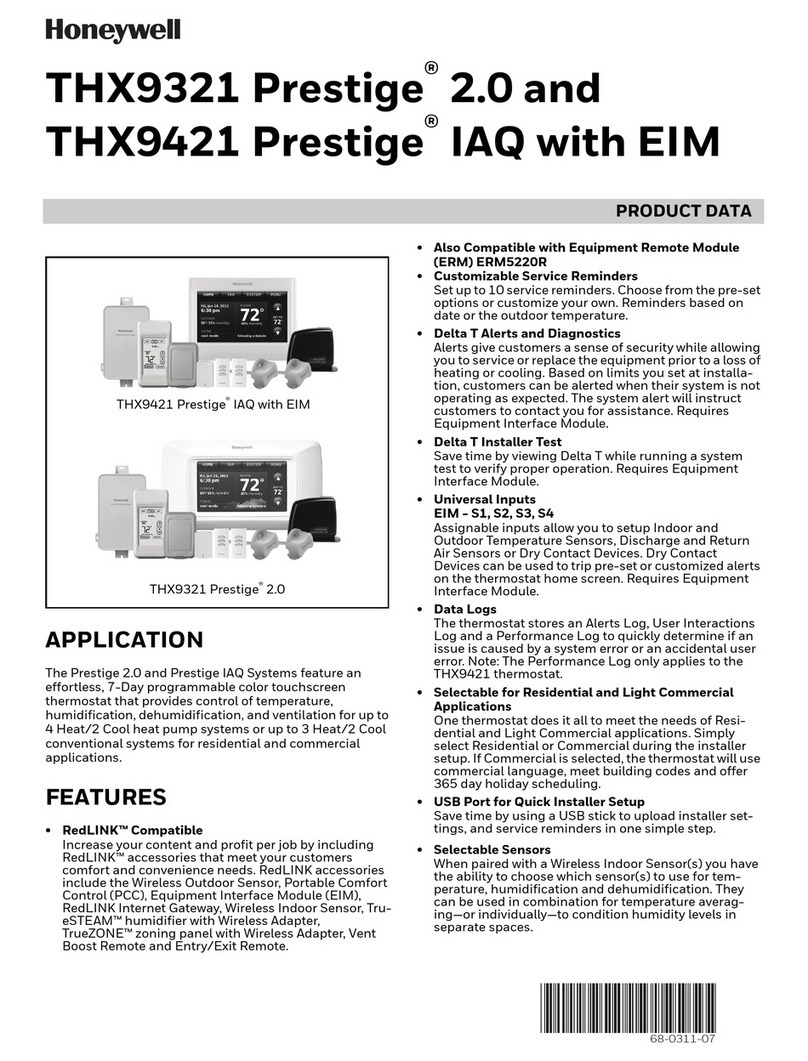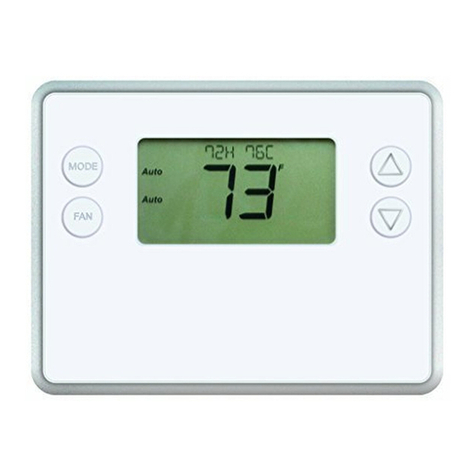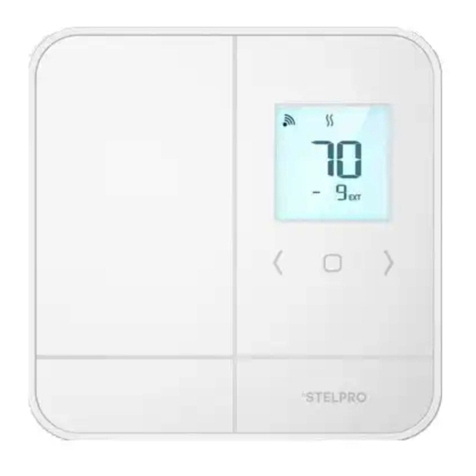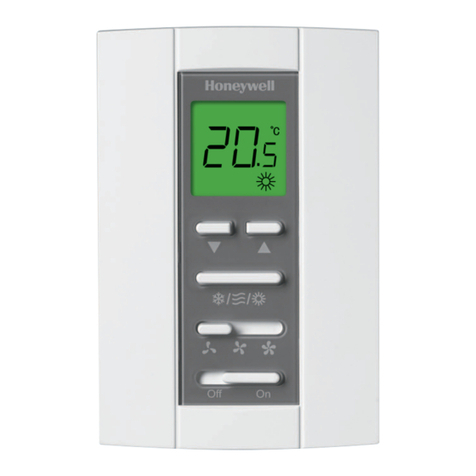10
In PARTY il cronotermostato mantiene la temperatura di comfort se-
lezionata senza limiti temporali.
In OFF il cronotermostato è spento (tranne eventuale richiesta di
calore per raggiunta temperatura antigelo).
Il cronotermostato arriva già con fasce orarie pre-impostate (cfr. ta-
bella sotto), ma queste possono essere modicate a seconda delle
esigenza dell’utente (cfr. paragrafo encoder).
Fasce di riscaldamento pre-impostate
GIORNO ON OFF ON OFF
Lunedì (giorno 1) 06:00 08:00 16:00 22:00
Martedì (giorno 2) 06:00 08:00 16:00 22:00
Mercoledì (giorno 3) 06:00 08:00 16:00 22:00
Giovedì (giorno 4) 06:00 08:00 16:00 22:00
Venerdì (giorno 5) 06:00 08:00 16:00 22:00
Sabato (giorno 6) 08:00 11:00 16:00 23:00
Domenica (giorno 7) 08:00 11:00 16:00 23:00
Altri valori impostati di fabbrica sono:
• Temperatura di comfort: 21 °C
• Temperatura “economy”: 16 °C
• Temperatura di protezione antigelo: 5 °C
• Isteresi OFF: 0,4 ° C (il riscaldamento viene spento a 0,4 °C al di
sopra del target impostato)
• Isteresi ON: 0,2 ° C (il riscaldamento viene acceso a 0,2 °C sotto il
target impostato).
• La modalità raffrescamento rispecchia i valori di cui sopra
(attenzione che lo scambio acceso/spento del relè viene fatto
solo sulla soglia della temperatura di comfort – nella modalità
raffrescamento sparisce il signicato della temperatura economy).
BATTERIE SCARICHE
Le due batterie in dotazione sono garantite per durare almeno 1
anno per un normale utilizzo dell’apparecchio. Quando le batterie
sono scariche la relativa icona apparirà sul display. Meglio cambia-
re batterie in tempo per evitare richieste sbagliate di riscaldamento.
Ogni volta che vengono rimosse le batterie viene cancellata l’ora; le
altre impostazioni rimangono memorizzate.
ERRORI
• In caso di mancata comunicazione radio tra il ricevitore e il tra-
smettitore, il led rosso o verde sul ricevitore inizia a lampeggiare
irregolarmente. L’errore può vericarsi sia quando le batterie sono
scariche del tutto (icona batterie accesa sul display), sia quando la
posizione del trasmettitore è inappropriata (distanza troppo elevata
o disturbi interni all’edicio come muri in cemento armato o altri di-
sturbi elettronici). Una volta ripristinata la comunicazione, il termo-
stato senza li ritorna automaticamente nella sua normale attività
di funzionamento senza alcuna necessità di azioni di ripristino. Se
necessario cambiare posizione al trasmettitore.
• In caso di perdita di comunicazione tra ricevitore e trasmettitore, il
riscaldamento si accende (chiusura del relè); l’accensione o meno
della caldaia dipenderà sempre e comunque dalla selezione della
posizione estate/inverno sulla caldaia stessa. Questa funzionalità
è per evitare congelamenti in caso di perdita di comunicazione, nel
caso di selettore caldaia in posizione inverno.
• Se il trasmettitore si trova al limite della distanza massima consen-
tita, la comunicazione può momentaneamente mancare; al ripristi-
no tutto torna automaticamente al normale funzionamento.
• In caso di mancanza di alimentazione al ricevitore (black out elet-
trico), la comunicazione verrà persa; una volta ripristinata l’ener-
gia, il ricevitore ritorna automaticamente a funzionare secondo le
regole date dal trasmettitore. Non è richiesta nessuna operazione
di ripristino.
• Questo prodotto ha una comunicazione bidirezionale tra il
trasmettitore e il ricevitore, la mancata comunicazione tra i due
genera un allarma visibile a display (codice E82) e un allarme
comunicato mediante LED sul ricevitore.
• Allarme E82 = mancanza di radiofrequenza tra ricevitore e trasmet-
titore.
• Allarme E84 = danneggiamento irreversibile della scheda elettro-
nica. Non riparabile.
MENÙ TECNICO E FUNZIONI SPECIALI
(SOLO PER ESPERTI)
Il cronotermostato è dotato di una serie di parametri tecnici acces-
sibili solo mediante password attraverso specico menù tecnico.
L’accesso e la modica di questi parametri sono raccomandati per
solo personale esperto perché la modica cambia notevolmente il
funzionamento del cronotermostato e deve essere fatta solo se ne-
cessariamente richiesto dal tipo di installazione.
Il menù tecnico è accessibile dal menù principale selezionando la po-
sizione PL (cfr. paragrafo encoder). La password richiesta per entrare
è il numero 18. All’interno del menù PL sono presenti parametri che
possono essere modicati come descritto di seguito.
PAR. DESCRIZIONE
1-
COUP
COUP - ABBINAMENTO RADIO RICEVITORE-
TRASMETTITORE. Il ricevitore e il trasmettitore all’interno
della stesse scatola arrivano già abbinati tra loro, se
necessario è possibile ri-codicare l’abbinamento tra
trasmettitore e ricevitore. Selezionare questo parametro,
entrare premendo l’encoder. Una volta entrati il display
mostra “- -“, premere il pulsante del ricevitore per 3
secondi il LED verde inizia a lampeggiare regolarmente.
L’abbinamento avviene a partire dal lampeggio regolare del
led. Il processo di abbinamento si conclude quando il LED
del ricevitore nisce di lampeggiare (l’abbinamento può
durare no a qualche minuto). Sul trasmettitore premere
l’encoder per confermare l’avvenuto abbinamento ed uscire.
2 - CH
CH - RADIO FREQUENZA. Il cronotermostato utilizza una
frequenza radio di 868MHz, come stabilito dalle regolamen-
tazioni CE. Nel caso che questo valore interferisca con ap-
parecchi che utilizzano la medesima frequenza è possibile,
con questo parametro, variarne leggermente il valore. Valo-
re di default è CH4 che corrisponde a 868.0MHz; le scelte
sono tra CH0=867.5MHz no a CH9=868.4MHz. Premere
l’encoder per selezionare il nuovo valore scelto. Dopo aver
cambiato il valore è necessario procedere a rifare l’abbina-
mento trasmettitore ricevitore come descritto al parametro
01.
ATTENZIONE! La modica del valore della frequenza deve
essere fatta solo se strettamente necessario (non per errori
dovuti a distanza troppo alta o per ostacoli pesanti tra rice-
vitore e trasmettitore).
3 - FRST
FRST - TEMPERATURA ANTIGELO. Questo cronotermo-
stato è dotato di funzione antigelo che attiva il riscaldamen-
to, qualunque sia la modalità, se la temperatura scende
sotto un determinato valore (ammesso che la caldaia sia
impostata in modalità inverno). Selezionando il parametro
FRST è possibile modicare questa temperatura, valore im-
postabile tra 3° e 10°C. Impostazione di fabbrica = 5 °C. La
temperatura antigelo diventa il minimo valore impostabile
della temperatura “economy”.
ATTENZIONE! Questa funzione non è da intendersi né
come antigelo principale dell’impianto di riscaldamento né
come protezione della caldaia.
4 - H ON
H ON - ISTERESI ON. Il valore selezionato con questo
parametro indica l’isteresi di accensione della richiesta di
calore rispetto al set point. Il valore pre-impostato di fabbri-
ca è 0,2°C. Parametro selezionabile tra 0,0°C e 2,0°C. La
richiesta di calore inizia quando la temperatura ambiente
scende sotto il valore di set point diminuito di questo valore
selezionato.
5 - HOFF
HOFF - ISTERESI OFF. Il valore selezionato con questo
parametro indica l’isteresi di spegnimento della richiesta di
calore rispetto al set point. Il valore pre-impostato di fabbri-
ca è 0,4°C. Parametro selezionabile tra 0,0°C e 2,0°C. La
richiesta di calore termina quando la temperatura ambiente
raggiunge il valore di set point addizionato di questo valore
selezionato.
6 - SENS
SENS – ESCLUSIONE SENSORE AMBIENTE. Il sensore
di temperature può essere disattivato/attivato. Quando at-
tivo (ON), il termostato funziona regolarmente consideran-
do la temperatura ambiente e la programmazione oraria,
quando disattivato (OFF), il termostato considera solo la
programmazione. Da fabbrica questo parametro esce in ON
